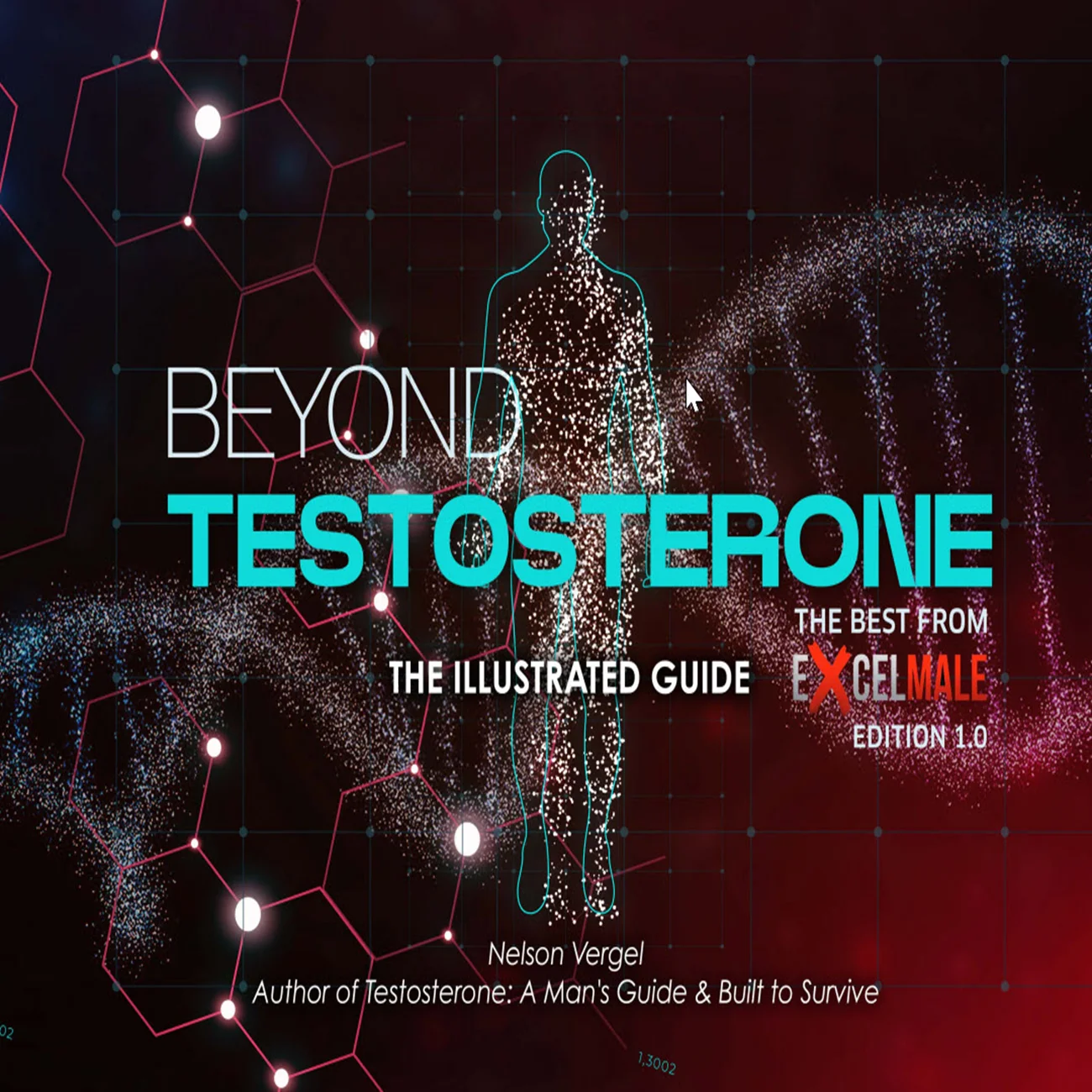* To our knowledge, this is the first report demonstrating alterations in spermatogenesis as intratesticular morphological changes, specifically enlargement of seminiferous tubules, by US.
The provided text is an excerpt from a retrospective observational study that explores the use of ultrasonography (US) to monitor changes in spermatogenesis in men with azoospermia due to hypogonadotropic hypogonadism (HH) who are undergoing gonadotropin replacement therapy. The objective was to demonstrate a correlation between the development of thick seminiferous tubules—defined as those >300 μm in diameter observed on US images—and successful sperm production. The study tracked ten patients receiving human chorionic gonadotropin (hCG) and recombinant follicle-stimulating hormone (rFSH) and concluded that a strong, positive correlation exists between the increased density of thickened seminiferous tubules and higher sperm counts. The authors emphasize that this US-based assessment provides a noninvasive, real-time method to evaluate the progression of spermatogenesis, offering crucial guidance for making timely treatment decisions, such as when to consider microdissection testicular sperm extraction (micro-TESE).

Briefing Document: Ultrasound Imaging of Seminiferous Tubules as a Novel Biomarker for Spermatogenesis
Executive Summary
A retrospective observational study provides the first-ever evidence that high-frequency ultrasound (US) imaging can directly visualize and quantify improvements in spermatogenesis in men with azoospermia due to hypogonadotropic hypogonadism (HH) undergoing hormone therapy. The central finding is that the enlargement of seminiferous tubules, identifiable on US images, serves as a powerful, noninvasive, and real-time biomarker for sperm production.
The study establishes that the appearance and increasing density of "thick seminiferous tubules," defined as those greater than 300 μm in diameter, is a primary indicator of spermatogenic progression. This morphological change was observed to occur just before or concurrently with the first appearance of sperm in the ejaculate. Critically, the density of these thickened tubules demonstrated a stronger correlation with subsequent sperm counts than traditional metrics like testicular volume.
This ultrasound-based method offers a significant clinical advantage by enabling the assessment of treatment efficacy before changes are detectable through semen analysis, which can take many months or even years. This allows for more timely and informed clinical decisions, including modifications to therapy or determining the optimal timing for surgical sperm retrieval procedures like microdissection testicular sperm extraction (micro-TESE). The research positions US-based morphological evaluation as a promising and valuable tool in the management of male infertility.
--------------------------------------------------------------------------------
1. Study Overview and Methodology
The research aimed to demonstrate the relationship between alterations in the ultrasound appearance of seminiferous tubules and the progression of spermatogenesis in patients with azoospermia caused by hypogonadotropic hypogonadism (HH).
• Study Design: A retrospective observational study conducted at two private male infertility clinics in Japan under an institutional review board-approved protocol.
• Patient Cohort: The study reviewed the medical records of 10 male patients, aged 27 to 49 years (mean age 38.3), diagnosed with azoospermia due to HH. The diagnosis was based on low serum testosterone (<100 ng/dL) with low or normal-to-low gonadotropin levels (FSH and LH). Seven patients had congenital HH (including two with Kallmann syndrome) and three had adult-onset HH.
• Treatment Protocol: Patients received gonadotropin replacement therapy. The regimen began with subcutaneous human chorionic gonadotropin (hCG) monotherapy (5,000 IU, 3 times weekly). After three months, 150 IU of recombinant follicle-stimulating hormone (rFSH) was added, administered 3 times weekly alongside hCG.
• Key Outcome Measures:
◦ Primary Outcome: The appearance of sperm in the ejaculate.
◦ Secondary Outcomes: Sperm count parameters (total, motile, and normal morphology), testicular volume, and the density of thick seminiferous tubules as determined by US imaging.
• Ultrasound Technique: Board-certified sonographers used a high-frequency transducer (10–14 MHz). To visualize the seminiferous tubules, US images were processed by adjusting contrast to 96% and brightness to 30%. "Thick seminiferous tubules" were defined as having a diameter >300 μm. The density of these tubules was quantified by calculating the proportion of white pixels in binarized US images.
2. Core Findings and Evidence
The study demonstrated a high rate of treatment success and identified a strong correlation between US-visualized changes in testicular morphology and sperm production.
Treatment Efficacy and Sperm Production
• Sperm Appearance: Nine of the 10 patients (90%) successfully produced sperm in their ejaculate following gonadotropin replacement therapy.
• Timing:
◦ One patient (#9) showed sperm after only 3 months of hCG monotherapy.
◦ The other eight successful patients achieved their first appearance of sperm after a median of 4.5 months (range: 1–9 months) of combined hCG and rFSH therapy.
◦ One patient (#6) remained azoospermic after 25 months of treatment.
The Central Biomarker: Thick Seminiferous Tubules
The study's most significant finding is the role of seminiferous tubule diameter as a direct indicator of spermatogenesis.
• Predictive Appearance: The visualization of thick seminiferous tubules (>300 μm) on US images occurred "concurrently with or just before the first appearance of sperm in the ejaculate."
• Density as a Quantitative Marker: An increased density of these thickened tubules, as observed on US, corresponded directly to higher sperm counts in the ejaculate.
• Hormonal Response: As expected, treatment led to significant increases in serum testosterone and FSH levels, confirming the intended endocrine response (Table 1).
Table 1: Plasma Hormone Levels Before and During Treatment (Median Values)
Correlation Analysis: A Superior Predictive Metric
Statistical analysis confirmed that the density of thick seminiferous tubules is a more robust predictor of sperm production than testicular volume.
• A strong correlation was found between testicular volume and the density of thick seminiferous tubules (Spearman coefficient: 0.74).
• However, the density of thick tubules showed stronger and more significant correlations with all sperm parameters compared to testicular volume.
Table 3: Spearman Rank Correlation Coefficients with Sperm Parameters (at 6 months of hCG + rFSH)
3. Illustrative Case Analyses
Individual patient cases highlight the practical application and sensitivity of the ultrasound imaging technique.
• The Typical Responder (Patient #1): US images for this patient vividly demonstrate the treatment effect. Pretreatment images (Fig. 1A) showed only thin tubules. After 6 months of therapy (Fig. 1D), the US revealed a dense network of thick seminiferous tubules, corresponding to successful sperm production.
• The Non-Responder (Patient #6): This patient remained azoospermic after 25 months. US images taken over a year (Fig. 1E–H) showed no increase in the thickness or density of seminiferous tubules, predicting the lack of response. Subsequently, a micro-TESE procedure was performed. While US showed no general improvement, microscopic examination during surgery "revealed thick seminiferous tubules in a specific area, and sperm were successfully retrieved from these tubules." This led to a successful pregnancy via intracytoplasmic sperm injection (ICSI).
• The High Responder (Patient #9): This case illustrates the method's sensitivity. US imaging revealed thick seminiferous tubules before treatment began. The patient responded positively to hCG monotherapy, with sperm appearing in the ejaculate. When treatment was temporarily discontinued by the patient, US showed a decrease in testicular volume and tubule diameter, which rapidly recovered to previous levels upon resuming therapy.
4. Clinical Implications and Future Directions
The study's findings have significant implications for the clinical management of male infertility, particularly in cases of HH.
• Enhanced Treatment Monitoring: The technique allows for the detection of improved spermatogenesis "before it is evident in semen analysis." This is crucial, as traditional waiting periods for sperm to appear can extend over several years. This real-time, noninvasive monitoring can provide early reassurance or indicate a need for a change in strategy.
• Informing Clinical Decisions:
◦ Timing of Micro-TESE: The study suggests that if azoospermia persists and US shows no evidence of thick seminiferous tubules after one year of therapy, it is appropriate to consider micro-TESE. This provides a clearer, evidence-based timeline than previous recommendations of waiting up to two years.
◦ Therapy Selection: Pre-treatment US imaging may help tailor endocrine therapy. The presence of some thick tubules, as in Patient #9, could suggest that hCG monotherapy might be sufficient, avoiding the need for combined treatment.
• Technological Advancement and Accessibility: The authors acknowledge that the image processing method requires specialized expertise, which may limit current adoption. They propose that "advancements in artificial intelligence (AI) technology are expected to enhance our image processing techniques," potentially automating the analysis and making the method accessible to users of all skill levels.
• Broader Applications: The authors state, "This method holds promise for diagnosing a variety of spermatogenic disorders, including the differential diagnosis of nonobstructive and obstructive azoospermia," and for evaluating treatment effectiveness in these conditions.
5. Conclusion
This study is the "first report demonstrating alterations in spermatogenesis as intratesticular morphological changes, specifically enlargement of seminiferous tubules, by US imaging." The research establishes that observing the diameter and density of seminiferous tubules via ultrasound provides a noninvasive, real-time, and clinically valuable method for monitoring spermatogenic response to gonadotropin therapy in men with HH. This technique offers a superior predictive tool compared to testicular volume and empowers clinicians to make more timely and effective treatment decisions.
_________________________
Ultrasound (US) images of seminiferous tubules in patient #1 (A–D) and patient #6 (E–H). (A, E) Pretreatment US images revealed only roughly delineated thin seminiferous tubules in both patients. (B, F) No alterations were evident in the seminiferous tubules of either patient after 3-month of human chorionic gonadotropin replacement. (C) In patient #1, thick seminiferous tubules appeared on US images after 1 month of endocrine therapy. (D) Six months after gonadotropin replacement, thick seminiferous tubules were more densely depicted. (G, H) Thick seminiferous tubules did not appear on US images even after 1 year of endocrine treatment in patient #6.


Alterations in the ultrasound appearance of seminiferous tubules after gonadotropin treatment in patients with azoospermia because of hypogonadotropic hypogonadism (2025)
Objective
To demonstrate the relationship between ultrasound (US) changes in seminiferous tubules during gonadotropin replacement therapy and spermatogenic progression in patients with azoospermia because of hypogonadotropic hypogonadism (HH).
Design
Retrospective observational study.
Subjects
Ten patients from 2 private male infertility clinics in Japan with azoospermia because of HH received human chorionic gonadotropin (hCG) + recombinant follicle-stimulating hormone replacement (rFSH).
Exposure
Gonadotropin treatment with hCG and rFSH.
Main Outcome Measures
Semen analysis and US evaluation of seminiferous tubules.
Results
After the initial treatment with hCG alone, hCG and rFSH were administered by self-injection. Sperm appeared within the ejaculate in 9 of the 10 patients treated with gonadotropin replacement therapy. Thick seminiferous tubules, defined as >300 μm in diameter on the US image, were observed just before the first sperm appeared in the ejaculate. Furthermore, an increased density of thickened seminiferous tubules, as observed on US, corresponded to higher sperm counts in the ejaculate.
Conclusion
Among patients with HH, a strong correlation was observed between the degree of spermatogenesis stimulated by gonadotropin and the alterations observed in the US images of their seminiferous tubules. To our knowledge, this is the first report demonstrating alterations in spermatogenesis as intratesticular morphological changes, specifically enlargement of seminiferous tubules, by US imaging.
CONCLUSION
The main finding of this study was the change in the intratesticular morphology observed by US after gonadotropin replacement therapy, particularly the increase in the diameter of the seminiferous tubules. This increase was indicative of improved spermatogenesis. Assessing the diameter of seminiferous tubules using US provides a noninvasive and real-time method for observing changes in spermatogenesis, demonstrating significant clinical value. To our knowledge, this is the first report demonstrating alterations in spermatogenesis as intratesticular morphological changes, specifically enlargement of seminiferous tubules, by US.
Ultrasonographic Seminiferous Tubule Changes Track Gonadotropin Response in Azoospermia
The provided text is an excerpt from a retrospective observational study that explores the use of ultrasonography (US) to monitor changes in spermatogenesis in men with azoospermia due to hypogonadotropic hypogonadism (HH) who are undergoing gonadotropin replacement therapy. The objective was to demonstrate a correlation between the development of thick seminiferous tubules—defined as those >300 μm in diameter observed on US images—and successful sperm production. The study tracked ten patients receiving human chorionic gonadotropin (hCG) and recombinant follicle-stimulating hormone (rFSH) and concluded that a strong, positive correlation exists between the increased density of thickened seminiferous tubules and higher sperm counts. The authors emphasize that this US-based assessment provides a noninvasive, real-time method to evaluate the progression of spermatogenesis, offering crucial guidance for making timely treatment decisions, such as when to consider microdissection testicular sperm extraction (micro-TESE).
Briefing Document: Ultrasound Imaging of Seminiferous Tubules as a Novel Biomarker for Spermatogenesis
Executive Summary
A retrospective observational study provides the first-ever evidence that high-frequency ultrasound (US) imaging can directly visualize and quantify improvements in spermatogenesis in men with azoospermia due to hypogonadotropic hypogonadism (HH) undergoing hormone therapy. The central finding is that the enlargement of seminiferous tubules, identifiable on US images, serves as a powerful, noninvasive, and real-time biomarker for sperm production.
The study establishes that the appearance and increasing density of "thick seminiferous tubules," defined as those greater than 300 μm in diameter, is a primary indicator of spermatogenic progression. This morphological change was observed to occur just before or concurrently with the first appearance of sperm in the ejaculate. Critically, the density of these thickened tubules demonstrated a stronger correlation with subsequent sperm counts than traditional metrics like testicular volume.
This ultrasound-based method offers a significant clinical advantage by enabling the assessment of treatment efficacy before changes are detectable through semen analysis, which can take many months or even years. This allows for more timely and informed clinical decisions, including modifications to therapy or determining the optimal timing for surgical sperm retrieval procedures like microdissection testicular sperm extraction (micro-TESE). The research positions US-based morphological evaluation as a promising and valuable tool in the management of male infertility.
--------------------------------------------------------------------------------
1. Study Overview and Methodology
The research aimed to demonstrate the relationship between alterations in the ultrasound appearance of seminiferous tubules and the progression of spermatogenesis in patients with azoospermia caused by hypogonadotropic hypogonadism (HH).
• Study Design: A retrospective observational study conducted at two private male infertility clinics in Japan under an institutional review board-approved protocol.
• Patient Cohort: The study reviewed the medical records of 10 male patients, aged 27 to 49 years (mean age 38.3), diagnosed with azoospermia due to HH. The diagnosis was based on low serum testosterone (<100 ng/dL) with low or normal-to-low gonadotropin levels (FSH and LH). Seven patients had congenital HH (including two with Kallmann syndrome) and three had adult-onset HH.
• Treatment Protocol: Patients received gonadotropin replacement therapy. The regimen began with subcutaneous human chorionic gonadotropin (hCG) monotherapy (5,000 IU, 3 times weekly). After three months, 150 IU of recombinant follicle-stimulating hormone (rFSH) was added, administered 3 times weekly alongside hCG.
• Key Outcome Measures:
◦ Primary Outcome: The appearance of sperm in the ejaculate.
◦ Secondary Outcomes: Sperm count parameters (total, motile, and normal morphology), testicular volume, and the density of thick seminiferous tubules as determined by US imaging.
• Ultrasound Technique: Board-certified sonographers used a high-frequency transducer (10–14 MHz). To visualize the seminiferous tubules, US images were processed by adjusting contrast to 96% and brightness to 30%. "Thick seminiferous tubules" were defined as having a diameter >300 μm. The density of these tubules was quantified by calculating the proportion of white pixels in binarized US images.
2. Core Findings and Evidence
The study demonstrated a high rate of treatment success and identified a strong correlation between US-visualized changes in testicular morphology and sperm production.
Treatment Efficacy and Sperm Production
• Sperm Appearance: Nine of the 10 patients (90%) successfully produced sperm in their ejaculate following gonadotropin replacement therapy.
• Timing:
◦ One patient (#9) showed sperm after only 3 months of hCG monotherapy.
◦ The other eight successful patients achieved their first appearance of sperm after a median of 4.5 months (range: 1–9 months) of combined hCG and rFSH therapy.
◦ One patient (#6) remained azoospermic after 25 months of treatment.
The Central Biomarker: Thick Seminiferous Tubules
The study's most significant finding is the role of seminiferous tubule diameter as a direct indicator of spermatogenesis.
• Predictive Appearance: The visualization of thick seminiferous tubules (>300 μm) on US images occurred "concurrently with or just before the first appearance of sperm in the ejaculate."
• Density as a Quantitative Marker: An increased density of these thickened tubules, as observed on US, corresponded directly to higher sperm counts in the ejaculate.
• Hormonal Response: As expected, treatment led to significant increases in serum testosterone and FSH levels, confirming the intended endocrine response (Table 1).
Table 1: Plasma Hormone Levels Before and During Treatment (Median Values)
| Parameter | Pretreatment | 3 mo after hCG | 1 mo after hCG + rFSH |
| FSH (IU/L) | 0.7 | 0.1 | 2.8 |
| LH (IU/L) | 0.1 | 0.05 | 0.05 |
| Testosterone (ng/dL) | 20.9 | 559.9 | 740.2 |
Correlation Analysis: A Superior Predictive Metric
Statistical analysis confirmed that the density of thick seminiferous tubules is a more robust predictor of sperm production than testicular volume.
• A strong correlation was found between testicular volume and the density of thick seminiferous tubules (Spearman coefficient: 0.74).
• However, the density of thick tubules showed stronger and more significant correlations with all sperm parameters compared to testicular volume.
Table 3: Spearman Rank Correlation Coefficients with Sperm Parameters (at 6 months of hCG + rFSH)
| Parameter | Correlation with Testicular Volume | Correlation with Thick Tubule Density |
| Total Sperm Count | 0.76 (p<.05) | 0.81 (p<.01) |
| Total Motile Sperm Count | 0.73 (p<.05) | 0.75 (p<.05) |
| Total Normal Sperm Count | 0.50 (not significant) | 0.80 (p<.01) |
3. Illustrative Case Analyses
Individual patient cases highlight the practical application and sensitivity of the ultrasound imaging technique.
• The Typical Responder (Patient #1): US images for this patient vividly demonstrate the treatment effect. Pretreatment images (Fig. 1A) showed only thin tubules. After 6 months of therapy (Fig. 1D), the US revealed a dense network of thick seminiferous tubules, corresponding to successful sperm production.
• The Non-Responder (Patient #6): This patient remained azoospermic after 25 months. US images taken over a year (Fig. 1E–H) showed no increase in the thickness or density of seminiferous tubules, predicting the lack of response. Subsequently, a micro-TESE procedure was performed. While US showed no general improvement, microscopic examination during surgery "revealed thick seminiferous tubules in a specific area, and sperm were successfully retrieved from these tubules." This led to a successful pregnancy via intracytoplasmic sperm injection (ICSI).
• The High Responder (Patient #9): This case illustrates the method's sensitivity. US imaging revealed thick seminiferous tubules before treatment began. The patient responded positively to hCG monotherapy, with sperm appearing in the ejaculate. When treatment was temporarily discontinued by the patient, US showed a decrease in testicular volume and tubule diameter, which rapidly recovered to previous levels upon resuming therapy.
4. Clinical Implications and Future Directions
The study's findings have significant implications for the clinical management of male infertility, particularly in cases of HH.
• Enhanced Treatment Monitoring: The technique allows for the detection of improved spermatogenesis "before it is evident in semen analysis." This is crucial, as traditional waiting periods for sperm to appear can extend over several years. This real-time, noninvasive monitoring can provide early reassurance or indicate a need for a change in strategy.
• Informing Clinical Decisions:
◦ Timing of Micro-TESE: The study suggests that if azoospermia persists and US shows no evidence of thick seminiferous tubules after one year of therapy, it is appropriate to consider micro-TESE. This provides a clearer, evidence-based timeline than previous recommendations of waiting up to two years.
◦ Therapy Selection: Pre-treatment US imaging may help tailor endocrine therapy. The presence of some thick tubules, as in Patient #9, could suggest that hCG monotherapy might be sufficient, avoiding the need for combined treatment.
• Technological Advancement and Accessibility: The authors acknowledge that the image processing method requires specialized expertise, which may limit current adoption. They propose that "advancements in artificial intelligence (AI) technology are expected to enhance our image processing techniques," potentially automating the analysis and making the method accessible to users of all skill levels.
• Broader Applications: The authors state, "This method holds promise for diagnosing a variety of spermatogenic disorders, including the differential diagnosis of nonobstructive and obstructive azoospermia," and for evaluating treatment effectiveness in these conditions.
5. Conclusion
This study is the "first report demonstrating alterations in spermatogenesis as intratesticular morphological changes, specifically enlargement of seminiferous tubules, by US imaging." The research establishes that observing the diameter and density of seminiferous tubules via ultrasound provides a noninvasive, real-time, and clinically valuable method for monitoring spermatogenic response to gonadotropin therapy in men with HH. This technique offers a superior predictive tool compared to testicular volume and empowers clinicians to make more timely and effective treatment decisions.
_________________________
Ultrasound (US) images of seminiferous tubules in patient #1 (A–D) and patient #6 (E–H). (A, E) Pretreatment US images revealed only roughly delineated thin seminiferous tubules in both patients. (B, F) No alterations were evident in the seminiferous tubules of either patient after 3-month of human chorionic gonadotropin replacement. (C) In patient #1, thick seminiferous tubules appeared on US images after 1 month of endocrine therapy. (D) Six months after gonadotropin replacement, thick seminiferous tubules were more densely depicted. (G, H) Thick seminiferous tubules did not appear on US images even after 1 year of endocrine treatment in patient #6.
Alterations in the ultrasound appearance of seminiferous tubules after gonadotropin treatment in patients with azoospermia because of hypogonadotropic hypogonadism (2025)
Objective
To demonstrate the relationship between ultrasound (US) changes in seminiferous tubules during gonadotropin replacement therapy and spermatogenic progression in patients with azoospermia because of hypogonadotropic hypogonadism (HH).
Design
Retrospective observational study.
Subjects
Ten patients from 2 private male infertility clinics in Japan with azoospermia because of HH received human chorionic gonadotropin (hCG) + recombinant follicle-stimulating hormone replacement (rFSH).
Exposure
Gonadotropin treatment with hCG and rFSH.
Main Outcome Measures
Semen analysis and US evaluation of seminiferous tubules.
Results
After the initial treatment with hCG alone, hCG and rFSH were administered by self-injection. Sperm appeared within the ejaculate in 9 of the 10 patients treated with gonadotropin replacement therapy. Thick seminiferous tubules, defined as >300 μm in diameter on the US image, were observed just before the first sperm appeared in the ejaculate. Furthermore, an increased density of thickened seminiferous tubules, as observed on US, corresponded to higher sperm counts in the ejaculate.
Conclusion
Among patients with HH, a strong correlation was observed between the degree of spermatogenesis stimulated by gonadotropin and the alterations observed in the US images of their seminiferous tubules. To our knowledge, this is the first report demonstrating alterations in spermatogenesis as intratesticular morphological changes, specifically enlargement of seminiferous tubules, by US imaging.
CONCLUSION
The main finding of this study was the change in the intratesticular morphology observed by US after gonadotropin replacement therapy, particularly the increase in the diameter of the seminiferous tubules. This increase was indicative of improved spermatogenesis. Assessing the diameter of seminiferous tubules using US provides a noninvasive and real-time method for observing changes in spermatogenesis, demonstrating significant clinical value. To our knowledge, this is the first report demonstrating alterations in spermatogenesis as intratesticular morphological changes, specifically enlargement of seminiferous tubules, by US.
Last edited by a moderator:












